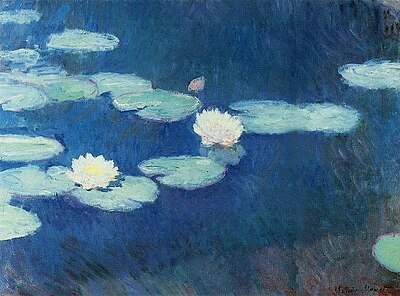Written by Janvi Sharma
Claude Monet (born in 1840 and dead by 1926) was a renowned French painter around his time. Especially being a key figure in the Impressionist movement, which emerged in the late 19th century.
Born and raised in Paris, Monet’s early life was marked by a love for art and a keen interest in nature. He also studied in Paris, where he met fellow artists who would become integral to the movement. Monet’s career was characterized by capturing fleeting qualities of light, and atmosphere, often painting scenes at different times and in varying weather conditions to study the effects of natural light on his subjects.
His most famous paintings, “Water Lilies”, “Haystacks”, and “Rouen Cathedral”. (All explained below), exemplify this dedication to capturing transient moments in time.
In 1883, Monet moved to Giverny, where he cultivated a magnificent garden, which became a central theme in his later works. His revolutionary approach to art and ability to convey the essence of a scene earned him a lasting legacy as one of the most influential artists of the modern era!

The man, the myth, the legend himself

A self portrait he did of himself
By far, his most famous series has to be “Water Lilies” (Nymphéas). Created in 1919, it is by far his most impressionistic series of paintings showcasing his flower garden’s pond in Giverny, France. The series showcases light, colour, and reflections on the water’s surface, creating a meditative experience and an iconic representation of Impressionist art.
Some of the paintings in the series:






Here’s the link to the full series
Another one of his iconic series is entitled “Haystacks” (Meules). Created in the late 19th century, the art piece features numerous paintings of haystacks in a field near Giverny, France. Monet’s mastery of colour and light, as well as his fascination with capturing transient moments, showcases his dedication to the Impressionist movement’s principles.
His series:






Here’s the link for the series
The last one of Monet’s series i’ll be showing is his “Rouen Cathedral” series, created in the 1890s, it depicts the Rouen Cathedral’s façade under different lighting conditions and times of day. Monet’s fascination with light and its impact on the cathedral’s appearance led him to study the interplay of light and atmosphere, a hallmark of the Impressionist movement. His loose brushwork and colour emphasis creates a sense of vibrancy and immediacy, showcasing his mastery of capturing fleeting moments.
His series:




Leave a Reply